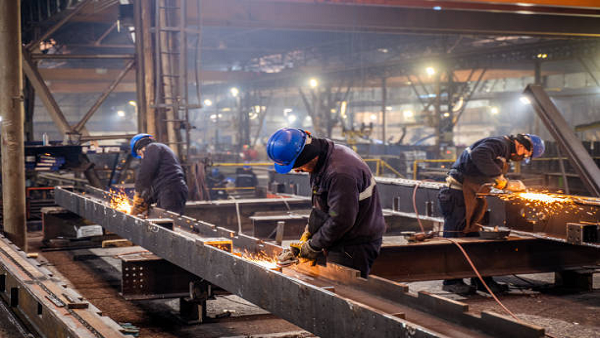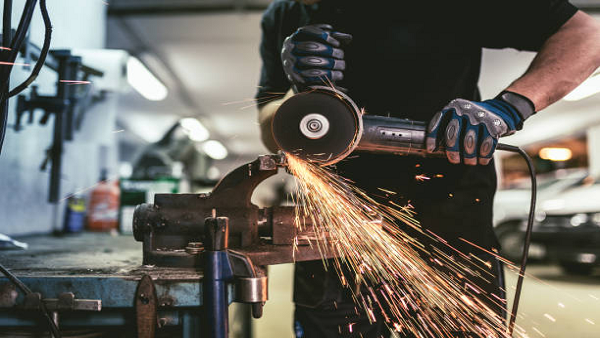Abrasives play a critical role in metal fabrication and welding processes. From surface preparation to finishing, welders rely heavily on various abrasive tools to ensure high-quality results. These tools help achieve precise welds, smooth surfaces, and clean finishes, enhancing the efficiency of welding operations. In this article, we will explore the different ways welders utilize abrasives, the types of abrasives commonly used, and how they contribute to the overall welding process.
1. Surface Preparation Before Welding
One of the key stages where abrasives are indispensable for welders is surface preparation. Prior to welding, metal surfaces need to be clean and free of contaminants like rust, paint, scale, or oil. Any debris on the surface can compromise the integrity of the weld, leading to weak joints or other defects. Welders use various abrasive tools to prepare the metal, including:
- Grinding Wheels: Used to remove rust, paint, or other contaminants from metal surfaces. Grinding wheels, available in various grades and sizes, are highly effective for cleaning large surface areas.
- Flap Discs: Flap discs are versatile tools combining the cutting ability of a grinding wheel with the finishing power of a sanding disc. They are particularly useful for smoothing out imperfections on metal surfaces while preparing them for welding.
- Wire Brushes: For lighter surface cleaning, wire brushes are often used to eliminate loose debris like rust or paint chips without altering the surface structure.
By properly preparing the surface, welders ensure the best possible weld adhesion, reducing the risk of porosity or cracking.
2. Edge Preparation for Weld Joints
Edge preparation is critical for creating proper weld joints. Depending on the type of joint (butt, lap, or T-joint), welders often need to modify the edges of the metal to facilitate strong connections. For example, beveling is commonly done on thick metal plates to create a V-shaped groove, allowing for better penetration of the weld.
Welders use abrasives for this process, particularly:
- Cutting Discs: Thin and precise cutting discs are employed to cut metal plates or pipes to the required size. Cutting discs provide a clean and sharp edge, crucial for achieving perfect fits in joints.
- Grinding Discs: After cutting, the metal edges may have burrs or rough spots. Grinding discs are used to smooth these areas and shape the metal for a seamless weld.
- Flap Wheels: Flap wheels, which are more flexible than grinding discs, can smooth the beveled edges and remove excess material in hard-to-reach places.
3. Weld Removal and Grinding
During welding, welders often need to grind down weld beads after laying the initial weld. This process, known as weld removal, is essential to create smooth, finished surfaces, especially when appearance is important or when multiple weld passes are required. Welders use abrasives like:
- Grinding Wheels: When excess weld material needs to be removed quickly, grinding wheels are ideal due to their aggressive nature. They are typically used in the initial stages of weld removal.
- Flap Discs: Once the bulk of the material is removed with a grinding wheel, flap discs can be used for finer work, producing a smoother surface with less risk of gouging the base metal.
- Fibre Discs: For more precision, fibre discs offer welders the ability to achieve a higher degree of surface smoothness, especially when working on stainless steel or other high-value metals.
The choice of abrasive depends on the type of weld being removed and the desired finish. For welders working on structural steel or pressure vessels, weld removal is a necessary step to ensure proper fit-up of parts and prevent weak points.
4. Post-Weld Finishing and Polishing
Post-weld finishing is another critical aspect of welding where abrasives come into play. After the weld is complete, the surface needs to be smoothed, polished, or sometimes even painted. In industries like automotive or aerospace, a smooth and polished finish is essential to ensure both aesthetics and performance. Common abrasives used in this stage include:
- Sanding Discs: Sanding discs, made from materials such as aluminium oxide or ceramic, are used to smooth out the metal after welding. They help create a fine finish, ready for polishing or painting.
- Polishing Pads and Wheels: For achieving a mirror-like finish, especially on metals like stainless steel, welders use polishing pads. These pads, often combined with polishing compounds, remove fine scratches and oxidation marks, resulting in a highly reflective surface.
- Buffing Wheels: Buffing wheels are used in the final stage to create a high gloss finish. They are softer than grinding or sanding abrasives and are mainly used with buffing compounds.
Finishing processes are crucial in industries where aesthetics and corrosion resistance are critical, such as in the production of stainless steel structures or custom metal fabrication.
5. Working with Abrasives in Welding Fume Extraction
Abrasives used in welding processes also contribute to the control of welding fumes. Abrasive cleaning methods, such as sandblasting or shot blasting, are used to prepare metal surfaces while minimizing airborne dust and fumes. This is especially important in environments where welders need to control exposure to hazardous particles. By using abrasives, welders can clean surfaces efficiently while maintaining a safer work environment.
6. Choosing the Right Abrasives for the Job
Not all abrasives are created equal, and welders need to select the right tools based on the type of metal they are working with and the nature of the welding job. Here are some of the key factors that welders consider when choosing abrasives:
- Material Type: Different metals require different types of abrasives. For instance, aluminium requires abrasives that prevent clogging, such as zirconia alumina or ceramic abrasives. Stainless steel may need a less aggressive abrasive like silicon carbide to prevent surface contamination.
- Abrasive Grit: The grit size of an abrasive determines how fine or coarse the surface finish will be. Coarse grit (e.g., 24 or 36) is used for aggressive material removal, while finer grit (e.g., 120 or 220) is suitable for finishing and polishing.
- Disc Durability: Welders often opt for high-quality abrasive discs with longer lifespans to minimize the need for frequent changes and improve productivity.
7. Safety Considerations for Welders Using Abrasives
Working with abrasives involves significant risks, especially in welding environments. Abrasive tools operate at high speeds, generating heat and debris that can cause injury if not handled properly. Welders must follow safety guidelines when using abrasives, including:
- Wear Protective Gear: Proper safety gear, such as goggles, gloves, and face shields, is essential to protect welders from flying debris and sparks. Respirators should also be used when working with abrasive products that produce fine dust.
- Check Tool Condition: Welders should inspect their abrasive tools before use, ensuring that the wheels or discs are not cracked or damaged. Damaged tools can break apart during operation, posing a serious hazard.
- Operate Tools at the Right Speed: Each abrasive tool is rated for a specific maximum operating speed. Welders should never exceed this limit, as doing so can result in the tool disintegrating.
Safety is paramount in all stages of welding and working with abrasives, and it is vital that welders stay aware of the dangers and take necessary precautions.
8. Innovations in Abrasive Technology for Welders
In recent years, there have been significant advancements in abrasive technology that benefit welders. Innovations in materials like ceramic and zirconia have led to abrasives that last longer, cut faster, and generate less heat. These new abrasives are particularly beneficial in industries that require precision welding, such as aerospace and medical device manufacturing.
Additionally, there are now abrasive products designed specifically for robotic welding operations, providing consistent performance in automated settings. These developments help welders improve productivity, reduce downtime, and achieve better results with less effort.
Conclusion
Abrasives are indispensable in the world of welding, playing a crucial role in everything from surface preparation to finishing touches. Whether grinding down welds or polishing metal to a mirror-like finish, welders rely on a variety of abrasive tools to achieve the desired results. By choosing the right abrasives for the job, welders can enhance their productivity, ensure the quality of their welds, and improve the overall efficiency of their operations.
Understanding the different types of abrasives and how to use them effectively is essential for any welder looking to produce top-quality work in today’s competitive metalworking industry.


